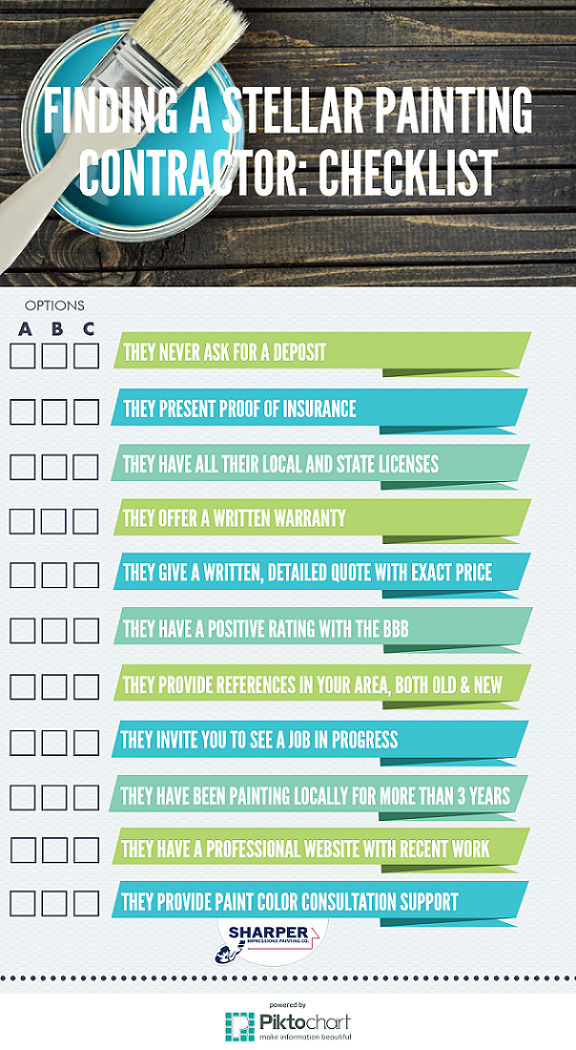The Value Of Weather In Commercial Outside Paint: What You Must Understand
The Value Of Weather In Commercial Outside Paint: What You Must Understand
Blog Article
Write-Up Developed By-MacKinnon Kidd
When you're planning an industrial external paint project, don't underestimate the influence of climate on your results. You require to take into consideration aspects like temperature level, moisture, and precipitation, as they can make or break your paint job. For example, did you recognize that perfect problems ask for certain temperature ranges and moisture levels? Falling short to check these aspects can cause uneven finishes or perhaps damage to fresh paint. Recognizing these elements is essential to attaining a resilient, expert end result. So, what specific weather should you watch out for?
Temperature Considerations
When it involves business external painting, temperature plays an important duty in the end result of your job. If you're painting in severe warmth, the paint can dry out too promptly, causing concerns like inadequate adhesion and irregular surfaces. You want to go for temperature levels between 50 ° F and 85 ° F for the best outcomes. Below 50 ° F, paint may not treat properly, while over 85 ° F, you risk blistering and breaking.
Timing your job with the appropriate temperature levels is important. Start your job early in the morning or later in the afternoon when it's cooler, particularly throughout hot months.
Also, think about the surface temperature level; it can be considerably more than the air temperature, particularly on sunny days. Make use of a surface area thermometer to examine this before you start.
If temperature levels are unpredictable, keep an eye on the weather prediction. Unexpected temperature drops or heat waves can hinder your plans. You don't want to begin painting just to have the problems alter mid-project.
Humidity Levels
Moisture levels significantly affect the success of your commercial exterior paint job. When the moisture is too high, it can hinder paint drying and curing, resulting in a series of concerns like bad bond and end up high quality.
If you're preparing a work during moist conditions, you may discover that the paint takes longer to completely dry, which can prolong your job timeline and rise costs.
Conversely, reduced humidity can additionally pose obstacles. Paint might dry too swiftly, protecting against correct application and causing an unequal surface.
You'll want to keep track of the humidity levels closely to ensure you're working within the excellent range, normally in between 40% and 70%.
To obtain the most effective results, take into consideration utilizing a hygrometer to measure moisture prior to starting your project.
If you locate the degrees are outside the ideal range, you may require to change your routine or select paints developed for variable problems.
Always get in kitchen painters portland with the manufacturer's guidelines for certain recommendations on moisture resistance.
Precipitation Influence
Rain or snow can significantly disrupt your commercial outside paint plans. When precipitation takes place, it can wash away fresh applied paint or develop an unequal finish. Preferably, you wish to choose days with dry weather condition to guarantee the paint sticks appropriately and cures effectively. If you're caught in a shower, it's finest to halt the project and await conditions to improve.
In addition, snow can be even more harmful. Not just does it develop a wet surface area, however it can likewise reduce temperature levels, making it tough for paint to dry. This can cause concerns like peeling or blistering down the line.
portland painter paintitrightpro to examine the weather report prior to beginning your task. If rainfall or snow is predicted, take into consideration rescheduling.
Constantly keep in mind to enable ample drying out time between coats, specifically if the weather condition remains uncertain.
Conclusion
In conclusion, watching on the climate is important for an effective industrial exterior painting job. By keeping an eye on temperature level, humidity, and rainfall, you can make certain the best conditions for application and healing. Remember to plan your work around beneficial weather condition and constantly comply with supplier guidelines. With the best approach, you'll accomplish a long-lasting, lovely coating that can stand up to the elements. Don't allow the weather catch you unsuspecting-- stay educated and paint wise!
